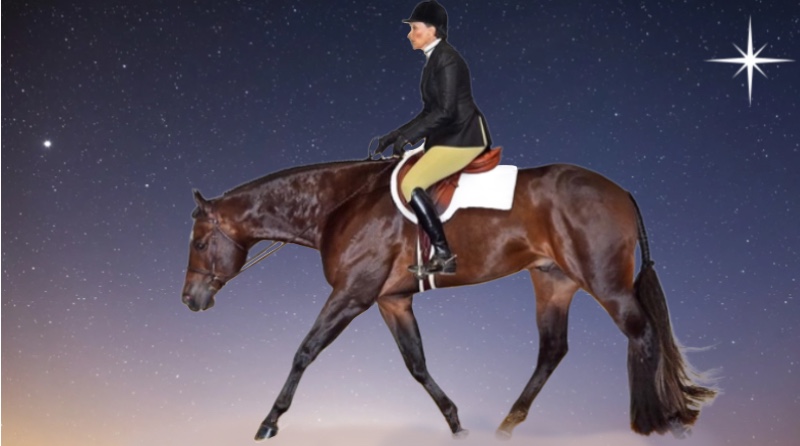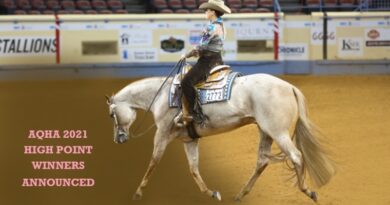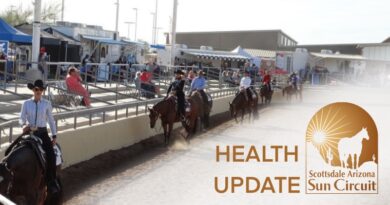Reach for the Stars with Nancy Sue Ryan
Renowned horsewoman, Nancy Sue Ryan pilots Champion after Champion in the Hunter Under Saddle ring. With multiple Congress, World, and NSBA Championships to her name, it is easy to describe her as the Queen of the Hunters.
Her strong, commanding presence in the show ring is the result of her meticulous and foundational style of training.
Before Nancy Sue ever begins to ride a horse, she evaluates what she believes the horse’s abilities are, and what they are capable of, both mentally and athletically. “Just like everyone else, I do not push my horses further than what they can perform.” She continues, “I try to go at their pace, as far as training, or whether they are receptive or not to the training.”
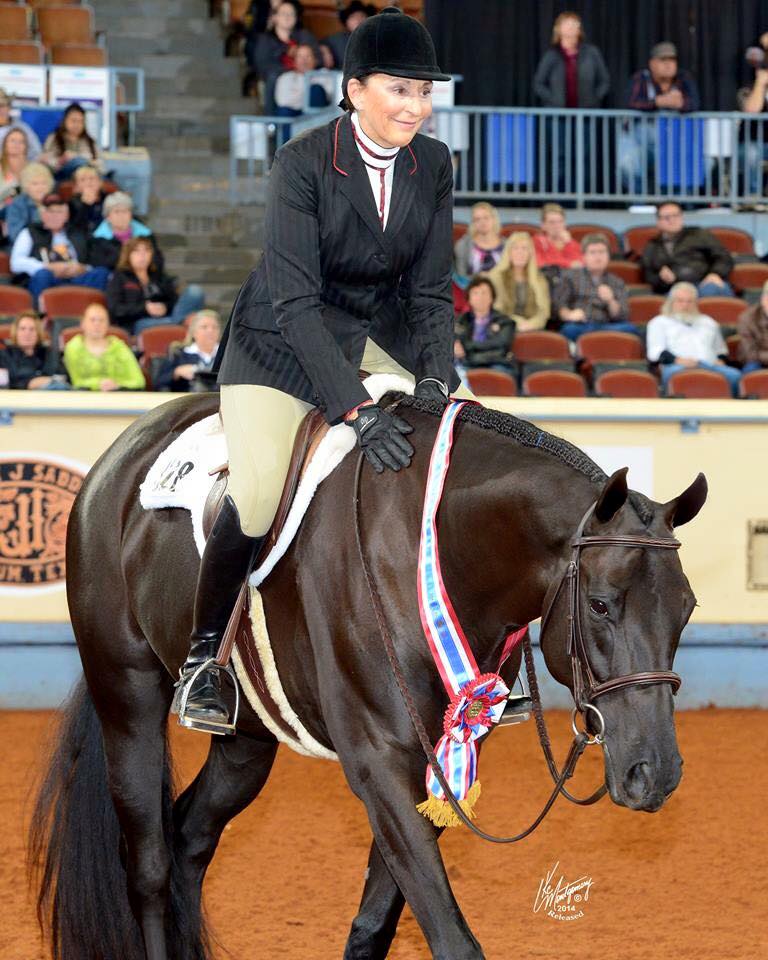
In order to gain the maximum reach out of her horses, Nancy Sue focuses on the hind legs, and building their strength, which ultimately propels the horse in the utmost forward motion.
One of her go-to drills is to move her horses laterally across the arena. “I do a lot of lateral X’s across the arena from side to side. And when I go around the end I let them relax and then we start two tracking again from corner to corner of the arena.”
Nancy Sue believes her approach to lateral movement might be a little different than some of her peers, but it is definitely effective. “I prefer to control my horses’ shoulders rather than hips. It’s a little bit different, but it is the way I have always done it. I control the shoulders. Moving laterally in this way builds strength over their backs, building muscle in legs; it is really doing everything.”
“I will drop them in the bridle and then turn their heads loose because I want them to respond off of my own body. I bend them at the shoulder and make them respond to my leg. Once a rider feels that, they know how it feels.”
She explains, “When you ask the horse to move laterally to the right, you have to move your left rein to the right direction and the right rein to the right direction while using your left leg to encourage the horse to the right, while taking your right leg off the horse’s side to give it somewhere to go.”
“You are moving laterally in their footsteps, [always] going forward,” she adds.
Nancy Sue believes in the power of working with her horses at the walk first, making sure each horse is comfortable with every task she asks them to complete, followed by the same approach with the trot and ultimately the canter.
“If a horse is not relaxed at the walk, then they are not going to relax at the trot and definitely not at the canter,” she advises. “You can wham-bam them. But if they’re not relaxed then you should not move forward to the next gait.”
She continues, “The walk absolutely matters. You can do so much training at the walk and in the trot. If you can control everything in those two gaits, then they should be able to lope pretty easily.”
Nancy Sue also discusses bridling up in the walk, trot, and canter. “You teach them to walk up into the bridle. The walk is where you start taking their head away. Then you can move up to the trot and into the canter, but they have to walk. If you get on one and they want to power walk, then you keep on walking them until they relax.”
As for helping the horses move the way she wants them to move, the power is in the rider’s legs, according to Nancy Sue. “We use our legs to push them to an angle which makes them reach at the trot and then at the lope as well.”
However, she uses a fine balance between her legs, seat, and hands to achieve the right feel. “I think it is feet first and the hands second. I think you have to use your legs to move their bodies to the right position, then you use your hands to guide them.” She continues, “I don’t believe in taking their heads. You should move them up from their rear end up to your hands to their head.”
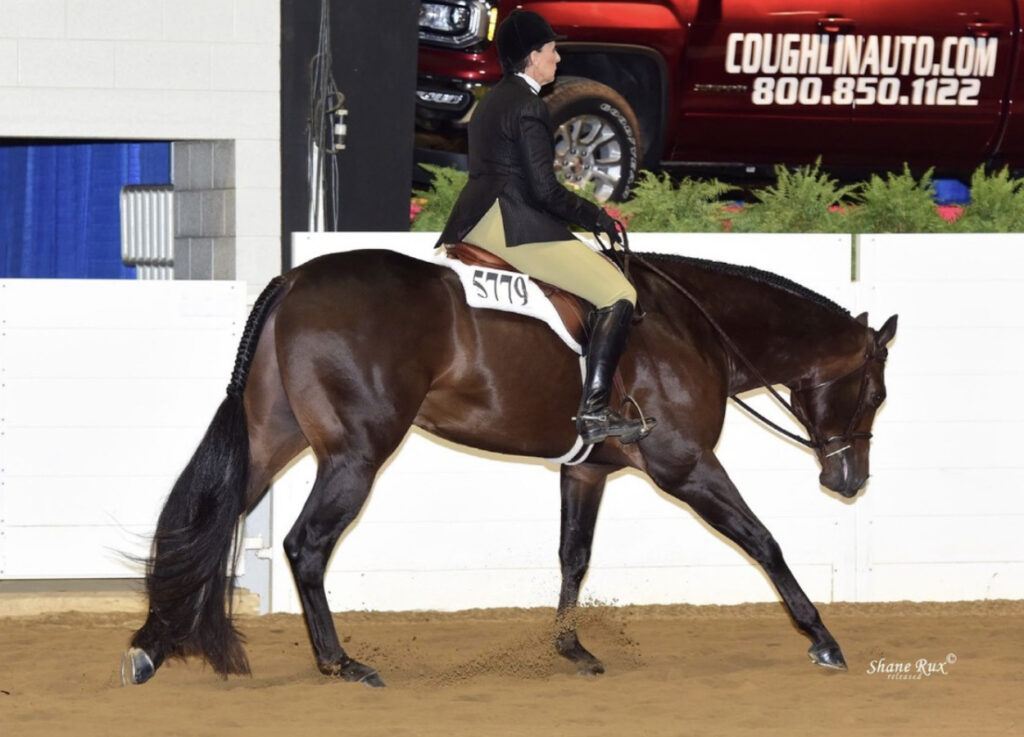
Nancy Sue does not believe in being harsh or quick with her hands, especially when it comes to getting the horse’s body in the right position. “To me when you take their head away to the side, that’s when you own them. When my horse’s head is in front of them and they’re being good, I don’t pull on their heads. I want them to move forward all the time, so when I pull the horse’s head to the side that is a correction. Rarely do I pull straight back to the chest. They must be misbehaving for me to pull their heads back.”
Nancy Sue also notes that she does not work on a horse’s head or even worry about head or neck placement until the end of their training. “I feel like the last thing that I put in place is their head. I let them go with their heads up because I do not want them to move down on their forehand.” She explains that if a horse’s weight is on his forehand, then he is pulling himself from the front and not propelling himself from his hind legs, which is what creates a deep reach.
According to Nancy Sue, the perfect placement of a horse’s neck is straight off, or just slightly above, the wither. Again, she explains the importance of a horse’s headset in getting maximum reach. “I do not like the neck below the withers; I cannot stand a horse that pulls from the front end. If you knock down their front end, then they start pulling on their front end.”
Nancy Sue makes the important distinction that although she trains her horses to get the maximum reach they are capable of getting in both the lope and the trot, that “you cannot make a horse trot bigger than what they’re athletically capable of doing. You can make them trot quicker, but you cannot make them trot bigger. You have to start off with a horse that is suited for the discipline that you’re asking them to be in.”
How do you know that a horse is going to be suitable for the Hunter Under Saddle?
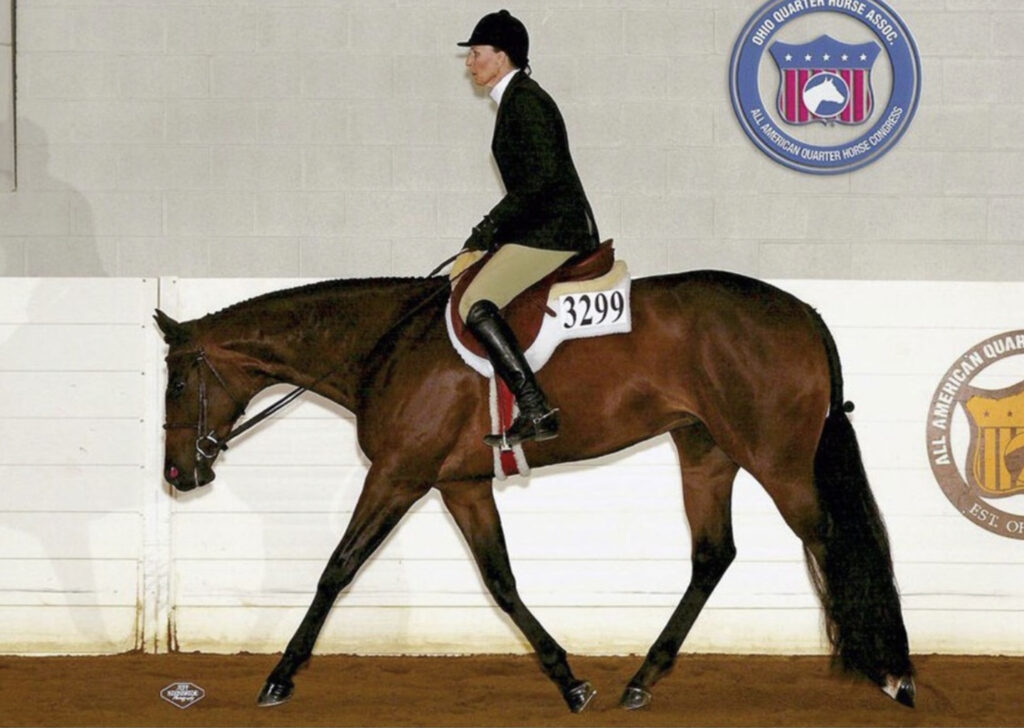
Nancy Sue simply says, “Watch them. You watch them and you know that this horse is going to have a natural ability to do the event that you’re asking them to do.”
Even for the horse that she knows could be called out on top, another important factor in her training is to not feel pressured to improve or push hard every ride, every day. “They don’t have to improve every ride or you’re going to take the ‘want to’ out of them. Some days you just go ride. You don’t have to be training on them constantly. An over trained horse is the one that sours out first. It’s all about consistency, consistency, consistency. When I take ahold of a horse’s head and they give it, I give it back to them. Ask for it, and if you receive it, give it back to them. Always have a place for them to go when you move them sideways. You can’t have everything boxed up. A horse has to have someplace to go. They have to have an open door somewhere.”
There is no doubt that Nancy Sue Ryan’s training methods and philosophies are built from foundational control and communication with the horse, and they are extremely valuable and competitive in the show pen.
At the end of the day, she does not fancy herself as special in any way. “I don’t have any super magic tricks. I just ride.”
About Nancy Sue Ryan
Inducted into the NSBA Hall of Fame in 2021, Nancy Sue Ryan has changed the AQHA and HUS Industry for the better. As a trainer, breeder and judge NSR has devoted her life the he horses.
Show Stop Farm has stood legendary HUS stallions Luke At Me, Fabuluke, A Beautiful Ride, Give Me The Goods, and currently leading stallion Good Better Best.
As a trainer and exhibitor, Nancy Sue has earned more than 90 AQHA, NSBA and Congress World and Reserve World Championships.
Be sure to visit www.showstopfarm.com to learn more.

